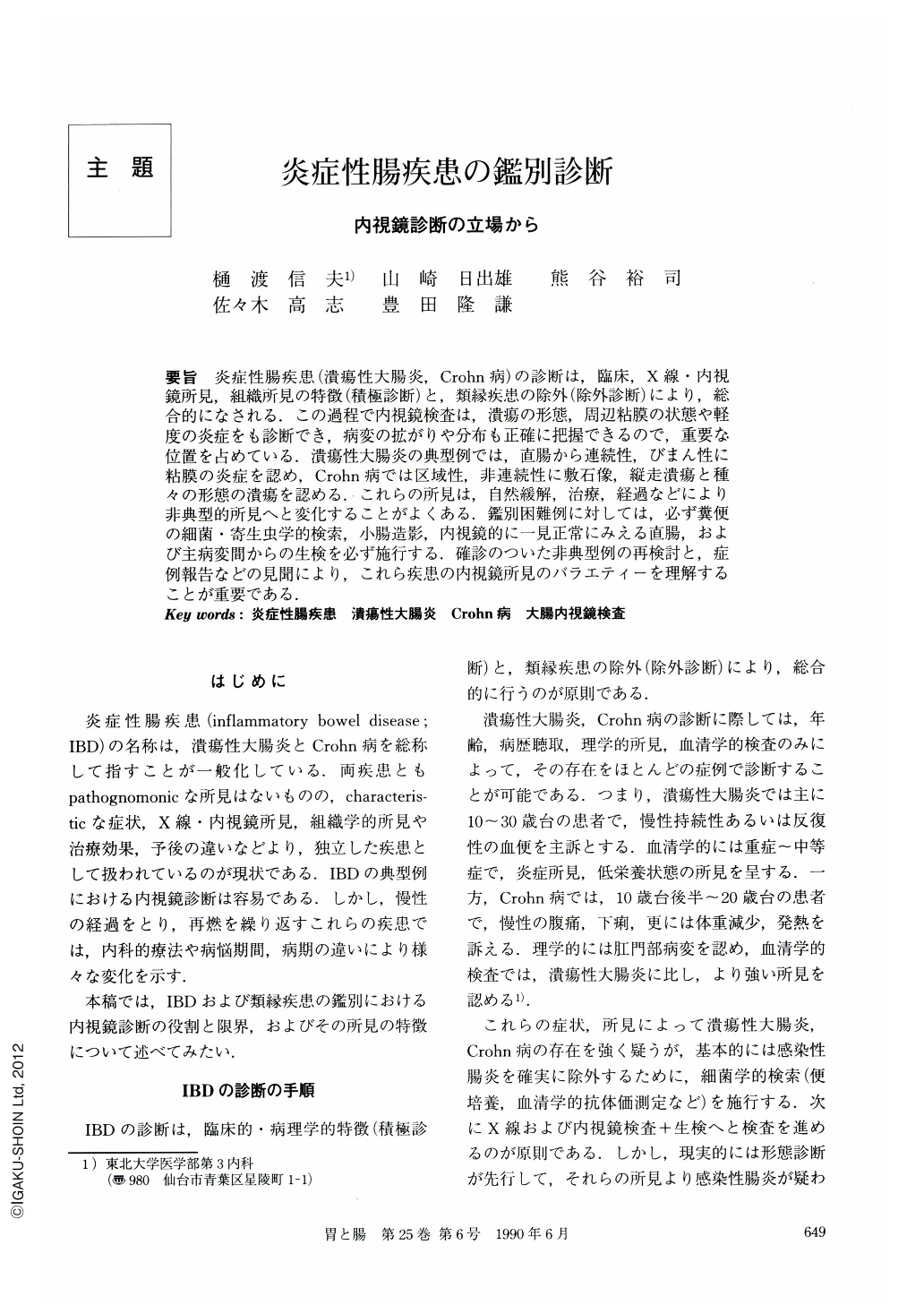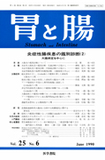Japanese
English
- 有料閲覧
- Abstract 文献概要
- 1ページ目 Look Inside
要旨 炎症性腸疾患(潰瘍性大腸炎,Crohn病)の診断は,臨床,X線・内視鏡所見,組織所見の特徴(積極診断)と,類縁疾患の除外(除外診断)により,総合的になされる.この過程で内視鏡検査は,潰瘍の形態,周辺粘膜の状態や軽度の炎症をも診断でき,病変の拡がりや分布も正確に把握できるので,重要な位置を占めている.潰瘍性大腸炎の典型例では,直腸から連続性,びまん性に粘膜の炎症を認め,Crohn病では区域性,非連続性に敷石像,縦走潰瘍と種々の形態の潰瘍を認める.これらの所見は,自然緩解,治療,経過などにより非典型的所見へと変化することがよくある.鑑別困難例に対しては,必ず糞便の細菌・寄生虫学的検索,小腸造影,内視鏡的に一見正常にみえる直腸,および主病変間からの生検を必ず施行する.確診のついた非典型例の再検討と,症例報告などの見聞により,これら疾患の内視鏡所見のバラエティーを理解することが重要である.
Diagnosis of inflammatory bowel disease (IBD, ulcerative colitis and Crohn's disease) is established based on characteristic clinical features combined with radiologic, endoscopic and histologic findings by excluding similar disorders. Endoscopic examination plays an important role in diagnosing IBD. Colonoscopic examination enables us to detect mild inflammation and small lesions, observe directly contour and surrounding mucosa of ulcers, and obtain biopsy specimens. The typical findings in ulcerative colitis are continuous and diffuse mucosal inflammation from the rectum to proximal colon. The typical findings in Crohn's disease, on the other hand, consist of cobblestoning, longitudinal ulcers and various shaped and sized ulcers scattered in segmental or discontinuous fashion. These findings are not always consistent because of such factors as spontaneous remission, management, duration and etc. In cases in which differential diagnosis is difficult, microbiological studies, small bowel enema and biopsies from the rectum and normally appeared area endoscopically between main lesions should be performed. It is important to understand the presence of a variety of endoscopic findings in IBD by reviewing films of atypical cases in which correct diagnoses were finally made and by watching case reports at medical congresses.

Copyright © 1990, Igaku-Shoin Ltd. All rights reserved.


